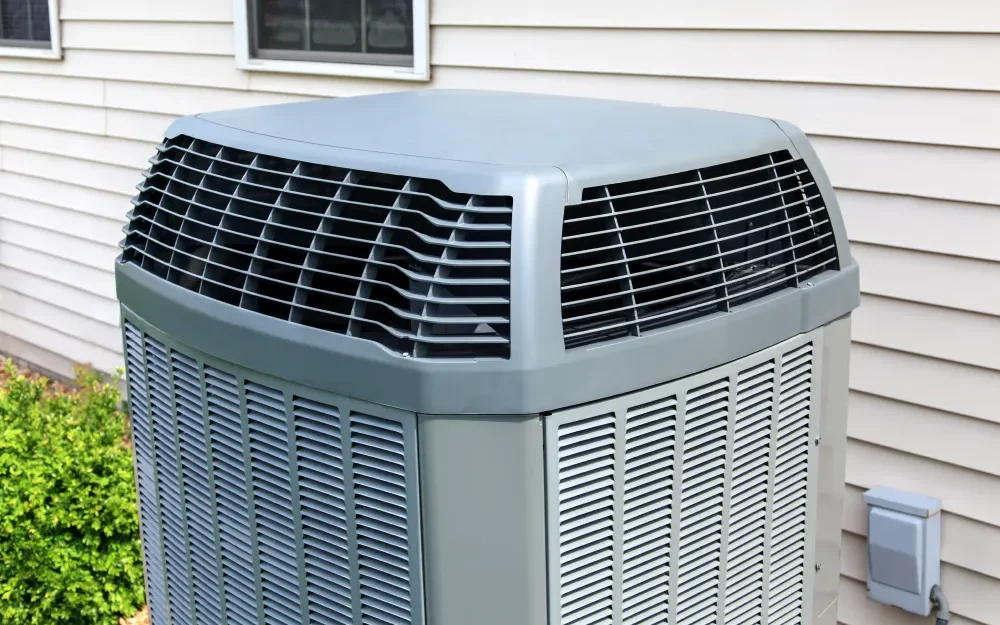Home Improvement Living in Texas
How Many Solar Panels Do You Need in Texas?
4 minute readHow to calculate the number of solar panels you need to power your Texas home
Home > BKV Energy Blog > All Posts > Air Conditioner Size Guide: What Size AC Do You Need?
4 minute read • Last update July 2025

To find the right size air conditioner, multiply your square feet of living space by 20. That helps you calculate how many BTUs (British Thermal Units) you need. Use our handy chart to match up your home size to the correct size cooling system.
| Square Footage | BTUs Needed | AC Size in Tons |
|---|---|---|
| Under 600 | 12,000 | 1 |
| 600-1,000 | 18,000 | 1.5 |
| 1,000-1,500 | 24,000 | 2 |
| 1,500-2,000 | 30,000 | 2.5 |
| 2,000-2,500 | 34,000 | 3 |
| 2,500-3,300 | 42,000 | 3.5 |
Air conditioning units come in various sizes, typically measured in BTUs (British Thermal Units) or tons. Common residential sizes range from 1.5 tons (18,000 BTUs) to 5 tons (60,000 BTUs). The air conditioner size your central AC system requires will depend on the total square footage of your living space and each individual room size within it.
When shopping for an AC unit, it’s crucial to match each unit’s capacity to the size of the space it will be cooling. An undersized unit will struggle to cool your home, leading to constant running, reduced cooling power, and higher energy costs. However, contrary to popular belief, a larger system doesn’t necessarily optimize performance. Rather, oversized units can cool too quickly, resulting in a short cycle, uneven cooling, and increased wear and tear.
Here are some general tips for selecting the right size AC unit:
Having established that choosing the right size air conditioner is essential for maintaining comfort and efficiency, let’s examine a quick reference air conditioner size chart, review some specific examples for common home sizes, and outline a simple formula for custom calculations for properties with an alternative square footage range.
If your home doesn’t fit neatly into the air conditioner unit size guide above, or you’re unsure about which AC unit size would be best, use the following process and formula:
For example, if your home is 1,200 square feet:
1,200 x 25 = 30,000 BTU
As you can see from the AC size chart above, a space of under 600 square feet will typically require a 12,000 BTU size air conditioner to provide efficient cooling without overloading the unit. As a general rule, a 500-square-foot space equates to a small one-bedroom home or apartment with a kitchen, bathroom, and separate living room.
A 1,000-square-foot area typically corresponds to a modest two-bedroom apartment or a cozy two-bedroom house with a kitchen, dining area, one or two bathrooms, and a living room. An additional person and sleeping space usually require a unit with 24,000 BTUs to allow for consistent comfort across multiple rooms.
For a 2,000-square-foot home, you’re likely looking at a spacious three-bedroom house with a kitchen, dining area, two or more bathrooms, a living room, and possibly a separate family room or office space. As you can see, the number of additional rooms can greatly affect proper air conditioner sizing, so you’d need a 34,000 BTU air conditioner for a home this size.
To increase capacity to a 48,000 BTU system type, you’d typically be residing in a substantial house with a second floor comprising around four bedrooms, a kitchen, dining area, multiple bathrooms, spacious living room, family room, and potentially additional rooms like a study or home gym.
Aside from the basics of room size and total square footage, there are several additional factors that can influence the size of the air conditioner you need:
Choosing the right electricity plan is crucial for maximizing savings on both heating and cooling systems.
At BKVE, we offer straightforward homeowner electricity plans tailored to meet your specific energy usage needs. These plans help ensure that you and your family stay cool and comfortable during the hot summer months without breaking the bank.
Simply enter your zip code to compare prices with other providers and find the best plan for your household.
Graham Lumley, Digital Marketing Manager at BKV Energy, leads digital and traditional marketing strategies, focusing on educating Texans about the state's deregulated energy market. With over 8 years of marketing experience, he creates content to help consumers understand and save on their energy bills, bringing a fresh and dynamic approach to the industry.

Home Improvement Living in Texas
How to calculate the number of solar panels you need to power your Texas home

Gardening in Texas presents unique challenges. Long, hot summers and frequent droughts mean that traditional landscaping often requires significant water
Get $50 off your electric bill!
Use code BKVEJOINUS50
Enter your zip code to shop BKV Energy's affordable, fixed-rate Texas electricity plans. Use the promo code for $50 off your electric bill.